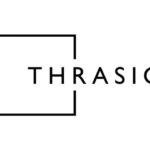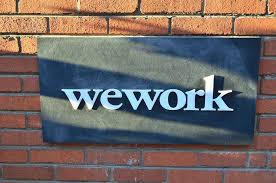The Difference Between B2B2C and B2C2B Business Models
The world of e-commerce is changing rapidly. New business models and acronyms pop up constantly as companies look for innovative ways to reach customers and gain an edge over the competition.
Two business models that sound similar but have key differences are B2B2C (business-to-business-to-consumer) and B2C2B (business-to-consumer-to-business). Understanding when to use each model can impact your e-commerce strategy and success.
Let’s break down what each model entails and when they are most effective.
What is B2B2C?
B2B2C stands for “business-to-business-to-consumer.” In this model, a business sells products or services to another business that then sells to consumers.
Here is a simple example:
- Company A produces toys
- Company B is a toy retailer with a website and physical stores
- Consumers purchase toys through Company B’s stores and website
In this scenario, Company A is business #1. It sells toys directly to Company B, the other business. Company B then sells the toys to consumers through both e-commerce and brick-and-mortar channels.
Some key aspects of the B2B2C model:
- Allows manufacturers to focus on production and wholesale selling
- Businesses build partnerships for channel distribution
- Requires collaboration between businesses
- Indirect relationship with end consumers
B2B2C works well for companies making physical products that rely on retailers to reach consumers. Some common examples include food and beverage, apparel, electronics, home goods, and automotive companies.
What is B2C2B?
B2C2B flips the model to “business-to-consumer-to-business.” In this structure, a business sells products or services directly to consumers who then resell or provide them to businesses.
Here is an example:
- Company A has an e-commerce website selling office supplies
- Consumers visit Company A’s website and purchase office supplies
- Those consumers use or resell those supplies at their own small businesses
In this case, Company A sells directly to individual consumers through their e-commerce store. Those consumers are typically business owners or employees who then use or resell those items as part of their own business operations.
Some key aspects of the B2C2B model:
- Allows businesses to sell directly to consumers
- Consumers act as distribution channel to businesses
- Requires marketing to both segments
- Direct relationship with end consumers
The B2C2B model works well for products or services that appeal to both individual consumers as well as businesses. Some examples include office supplies, software, food services, and cleaning services.
Key Differences Between the Models
Now that we’ve defined both models, let’s look at some key differences:
Relationship with End Consumer
- B2B2C – Indirect relationship through retailer partner
- B2C2B – Direct relationship between business and consumer
E-commerce Strategy
- B2B2C – Wholesale focused through the business portal
- B2C2B – D2C focused through branded ecommerce site
Marketing Approach
- B2B2C – Business-focused marketing
- B2C2B – Mix of consumer and business marketing
Product Offerings
- B2B2C – Broad assortment of products
- B2C2B – Curated products appealing to consumers
Pricing Strategy
- B2B2C – Volume discounts for business buyers
- B2C2B – Retail pricing aimed at consumers
Target Audience
- B2B2C – Other businesses
- B2C2B – Consumers + secondarily businesses
Route to Market
- B2B2C – Indirect through channel partners
- B2C2B – Direct to end users
| Criteria | B2B2C | B2C2B |
|---|---|---|
| Intermediary | Acts as a facilitator between businesses and consumers | Takes a backseat as consumers directly influence business decisions |
| Flow of Influence | One-directional: Businesses to consumers | Bidirectional: Consumers influence business decisions (B2B) |
| Target Audience | End consumers | Businesses |
| Value Proposition | Convenience and accessibility for businesses and consumers | Consumer empowerment, customized offerings |
When to Use Each Model
So when should you choose B2B2C or B2C2B? Here are some guidelines:
When B2B2C Works Best
- Selling physical products requiring distribution
- Products require retail stores or showrooms
- Your company focuses on manufacturing and wholesale
- End consumers prefer purchasing through retailers
When B2C2B Works Best
- Selling products/services both consumers and businesses use
- You want direct access to end consumers
- Your products don’t require physical retail locations
- Consumers purchase for business use or resale
For example, a toy manufacturer selling wholesale to large retailers would follow the B2B2C model. On the other hand, a software company selling design tools to creative professionals and agencies would use the B2C2B approach.
Real World Examples of B2B2C and B2C2B
To make these concepts more concrete, let’s look at some real-world examples of each model:
B2B2C:
- Microsoft – Sells Windows and Office software to businesses, which then provide computers and software to consumers.
- Cisco – Sells networking equipment to businesses, which provide internet access and services to consumers.
- Intel – Sells processors to PC manufacturers like Dell and HP, who then sell completed computers to consumers.
B2C2B:
- Uber – Connects individual driver partners (consumers) with riders (businesses/consumers).
- Etsy – Provides a marketplace for individual artisans and crafters (consumers) to sell to consumer and business buyers.
- Airbnb – Allows homeowners (consumers) to rent out their properties to travelers and tourism companies (businesses).
- Fiverr – Connects freelance professionals (consumers) with businesses and consumers needing services.
So in summary, B2B2C models provide products/services to businesses that then reach the end consumer, while B2C2B models leverage consumers to provide products/services to businesses and consumers.
Hybrid Approaches
While B2B2C and B2C2B models are distinct, some businesses adopt a hybrid approach:
- B2B + B2C – Businesses that sell directly to other businesses (B2B) while also selling directly to consumers (B2C).
- D2C + Retail Partners – Companies that sell through their own branded e-commerce site along with select brick-and-mortar retailers.
For example, Dell sells computers directly to businesses but also allows consumers to purchase online. And accessory brands like PhoneSoap sell through their own website along with being carried in stores like Target.
Determining the right distribution mix depends on your specific products, industry dynamics, and marketing capabilities. Often times a blended model maximizes reach across different customer segments.
Related Posts
Which Model is Right For Your Business?
When launching or growing an e-commerce business, one of the most important strategic decisions is which business model to adopt. Choosing the right route allows you to accurately target your audiences, tailor product selection and messaging, select the optimal sales channels and ultimately be more efficient with sales and marketing efforts.
Here are some tips on picking between B2B2C and B2C2B:
- Who is your end user? Identify who ultimately consumes or uses your offering. This can guide your ideal model.
- What distribution channels will work best? Consider if you need retail partners or can sell direct.
- Do you want to own the customer relationship? Selling direct allows for more control and customer data.
- What are your products best suited for? Determine if they address a consumer or business need (or both).
While the lines may blur between models at times, choosing a focus upfront allows you to build an e-commerce strategy tailored for your specific situation. As the saying goes, “If you try to please everyone, you please no one.” Define your target customers, value proposition, and ideal route to market. With the right business model in place, you can then concentrate on effective execution.
So there you have it – an in-depth look at B2B2C vs B2C2B models and when each one makes the most sense. The rise of e-commerce provides many options for taking products to market but also requires deliberate strategic decisions. By understanding these different models and aligning to your business strengths, you can set your company up for success.









